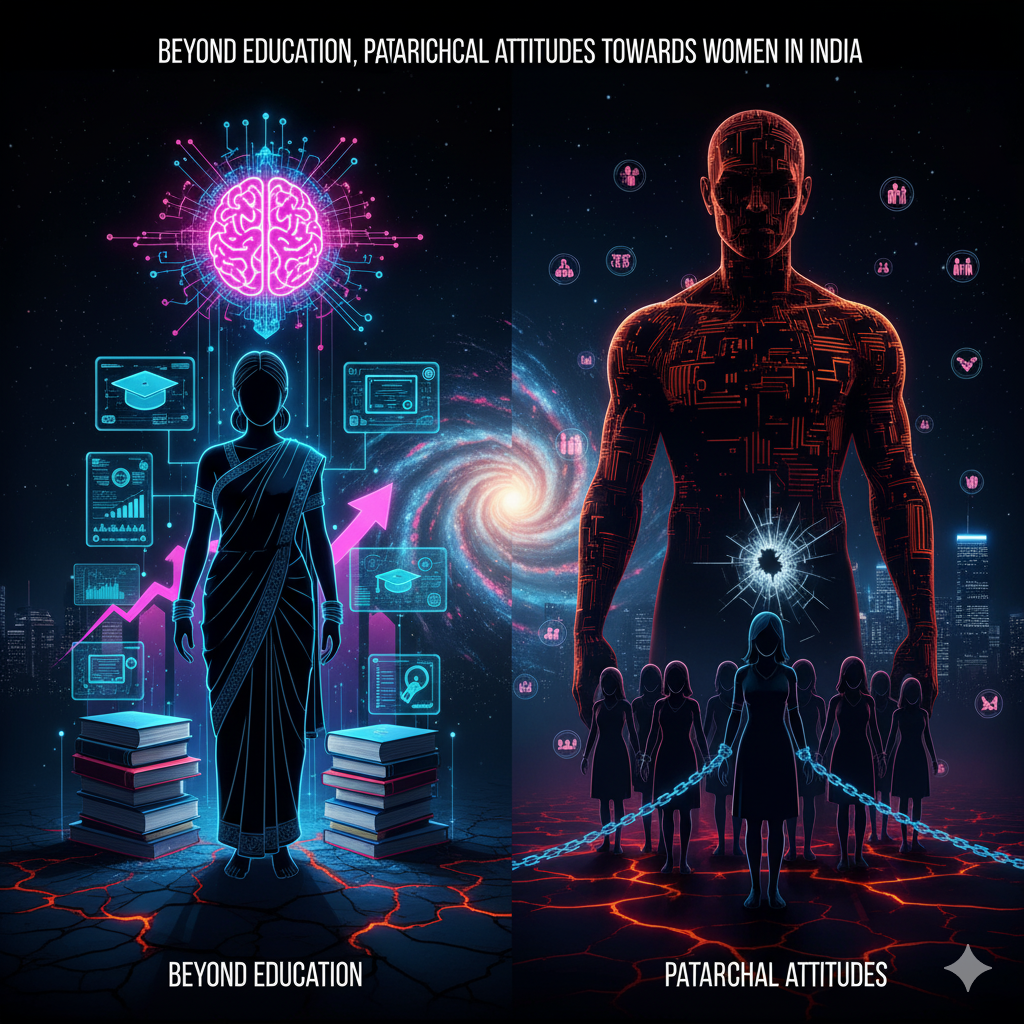Introduction
The concept of Revolution in Military Affairs (RMA) represents a paradigm shift in the way warfare is conducted. It involves a transformation in military strategies, technologies, organizational structures, and doctrines that significantly enhance the military’s capability to engage in modern warfare. The nature of RMA is rooted in the rapid advancement of technology, which reshapes the dynamics of conflict and national security. In the contemporary world, military modernization, technological innovation, and the integration of advanced systems have redefined the scope of warfare.
In the context of India, RMA holds a crucial role in shaping the nation’s military strategies, enhancing national security, and ensuring the country’s preparedness for future threats. India, a rising global power and a key player in regional security, faces complex security challenges from both conventional and non-conventional threats. As such, India’s defense policies and strategies are increasingly focusing on RMA to stay ahead in an ever-evolving security environment.
This article delves into the concept of Revolution in Military Affairs (RMA), its implications on India’s security landscape, and how India is adapting its military doctrine to align with global advancements. The article also explores the challenges India faces in integrating RMA into its defense systems and policies and provides recommendations for enhancing India’s military capabilities.
1. Understanding Revolution in Military Affairs (RMA)
RMA is often defined as a fundamental change in the conduct of warfare, brought about by the innovative application of new technologies and the development of new military strategies, doctrines, and organizational structures. This revolution is characterized by technological advancements that enable a more precise, efficient, and rapid execution of military operations. RMA is not merely about acquiring the latest technologies but also about fundamentally transforming how military forces operate, communicate, and make decisions.
The key features of an RMA include:
- Technological Advancements: The development of cutting-edge technologies such as precision-guided munitions (PGMs), stealth capabilities, unmanned aerial vehicles (UAVs), cyber warfare tools, and artificial intelligence (AI) has revolutionized the battlefield.
- Network-Centric Warfare: A shift from traditional warfare to network-centric warfare where communication, intelligence, surveillance, and reconnaissance (C4ISR) systems are seamlessly integrated, enabling real-time decision-making and coordination.
- Joint and Integrated Forces: The integration of different branches of the armed forces (army, navy, air force, etc.) into a unified force that can operate cohesively in joint operations. This shift is designed to enhance the effectiveness of military forces and provide a strategic edge.
- Precision Strike Capability: RMA emphasizes precision strikes with minimal collateral damage, achieved through the use of advanced technologies like satellite-guided missiles, drones, and laser-guided bombs.
- Transformation in Military Doctrine: The need to adapt military strategies and doctrines to the new technological realities and to make them more agile and adaptable in the face of evolving threats.
2. The Importance of RMA in India’s Security Context
India faces a variety of security challenges, including territorial disputes with neighboring countries like Pakistan and China, internal insurgencies, and the threat of terrorism. Additionally, with the rapid evolution of technology in military affairs, India must keep pace with global trends to maintain its military superiority and safeguard national security.
The significance of RMA in India’s security perspective lies in its ability to offer strategic advantages over adversaries, enhance deterrence capabilities, and prepare the military for future challenges. Given the complexities of India’s security environment, particularly the dual threats from both conventional and asymmetrical warfare, adopting RMA is critical for India to secure its borders and safeguard its national interests.
Key Security Challenges Facing India
- Border Security: India’s borders with Pakistan, China, and Bangladesh are prone to territorial disputes and military skirmishes. Technological advancements through RMA can enable more efficient surveillance, border monitoring, and precision strikes to safeguard India’s territorial integrity.
- Terrorism and Insurgency: India faces the challenge of terrorism from groups operating from Pakistan and other regions, as well as internal insurgencies in states like Jammu and Kashmir, the Northeast, and Naxalite-affected areas. RMA tools, such as intelligence-sharing platforms, drones, and cyber capabilities, can help enhance counterterrorism and counterinsurgency operations.
- Cybersecurity: The rise of cyber warfare has become a significant threat to national security. RMA includes the development of robust cyber capabilities to defend against cyberattacks, safeguard critical infrastructure, and ensure data security.
- Nuclear and Conventional Deterrence: India’s nuclear strategy is centered on maintaining a credible minimum deterrence. In addition to nuclear capabilities, RMA helps to enhance conventional forces’ capabilities and gives India the flexibility to respond to a range of conflicts with greater precision and efficiency.
- Regional Power Dynamics: India’s rising influence in South Asia and its position as a key regional power require modern military capabilities to deter aggression from neighbors, maintain peace, and safeguard its strategic interests. RMA plays a role in ensuring that India is capable of projecting power and responding effectively to regional threats.
3. Technological Developments Driving RMA in India
India has made significant strides in adopting RMA to bolster its military capabilities. Several technological developments are helping India modernize its defense forces and increase the effectiveness of its military strategies. Below are some of the key technological advancements that form the core of India’s RMA:
a. Precision-Guided Munitions (PGMs) and Ballistic Missiles
PGMs, such as smart bombs and guided missiles, allow India to carry out accurate strikes against enemy targets while minimizing collateral damage. These weapons, when integrated into India’s military, provide a significant edge in conventional warfare, particularly in situations where precision is crucial, such as counter-terrorism and counterinsurgency operations.
In addition, India’s ballistic missile development, including nuclear-capable missiles, is central to its deterrence strategy. The successful testing of long-range missiles, such as the Agni series, strengthens India’s capability to deter adversaries and respond with precision.
b. Unmanned Aerial Vehicles (UAVs)
UAVs are an integral part of RMA as they offer advantages in surveillance, reconnaissance, and targeted strikes. India has invested heavily in developing indigenous UAVs, such as the Rustom series, to enhance its intelligence, surveillance, and reconnaissance (ISR) capabilities. These UAVs provide real-time information from the battlefield, enabling Indian forces to make informed decisions swiftly.
Drones also serve as an essential tool in counterinsurgency operations in Jammu and Kashmir and the Northeastern states, where ground forces face challenges in monitoring and responding to threats.
c. Cyber Warfare and Space Technology
As a part of RMA, India has developed capabilities in cyber warfare and space technologies. The Indian government has established the Defence Cyber Agency (DCA) to safeguard against cyberattacks and conduct offensive cyber operations if necessary. The ability to disrupt enemy communications, disable critical infrastructure, or even manipulate enemy data has become a critical part of India’s national security strategy.
Moreover, India’s space agency, ISRO, has enhanced the country’s military intelligence capabilities through the development of satellite-based reconnaissance systems, which provide strategic surveillance of enemy territory and assist in missile guidance.
d. Artificial Intelligence (AI) and Automation
Artificial Intelligence is another important aspect of RMA that has gained attention in recent years. India is focusing on AI for military applications, such as autonomous vehicles, robotic soldiers, and predictive analysis for warfare tactics. The integration of AI allows for quicker decision-making, optimization of resources, and the ability to anticipate enemy moves.
Additionally, automation in defense systems can help reduce human error and enhance the efficiency of military operations, particularly in drone warfare and missile defense systems.
4. India’s Military Modernization and Strategic Response to RMA
India’s military modernization has evolved over the last few decades, with an increasing emphasis on acquiring cutting-edge technologies to address RMA challenges. Several defense modernization initiatives undertaken by India align with the principles of RMA and aim to enhance the nation’s military capabilities.
a. Defence Procurement and Indigenous Development
India has prioritized the procurement of advanced military technologies and the development of indigenous defense systems. The Make in India initiative has been instrumental in encouraging domestic defense manufacturing, allowing India to reduce its dependency on foreign arms suppliers. This includes the development of indigenous fighter jets like the Tejas, advanced artillery systems, and the ongoing development of next-generation air defense systems.
b. Integrated Defence Commands
One of the key features of RMA is the shift toward integrated forces that operate in synergy. India has taken steps toward creating integrated theatre commands, which allow the Army, Navy, and Air Force to operate as a single, coordinated entity. The integration of forces enhances India’s military responsiveness and ensures a more efficient use of resources in times of conflict.
c. Counterterrorism and Counterinsurgency Operations
India’s focus on RMA is evident in its approach to counterterrorism and counterinsurgency operations. The integration of drones, advanced surveillance technology, and intelligence-sharing platforms enables Indian security forces to track and neutralize terrorist and insurgent activities in real-time. The use of network-centric warfare also enhances coordination between various agencies and military units, improving the effectiveness of operations.
5. Challenges in Implementing RMA in India
Despite the advancements in military modernization, India faces several challenges in fully implementing RMA:
a. Resource Constraints
While India has made significant strides in military modernization, financial constraints often limit the speed at which new technologies can be acquired and integrated. Additionally, the high cost of advanced military hardware, including fighter jets, submarines, and missile defense systems, poses a significant challenge to the defense budget.
b. Technological Dependence on Foreign Sources
Although India has made notable progress in indigenous defense development, it remains dependent on foreign countries for certain high-end technologies. The need for technological self-reliance is critical to ensure that India is not vulnerable to external pressures during times of conflict.
c. Institutional and Organizational Barriers
Adapting to RMA requires significant changes in military doctrine, training, and organizational structures. India’s defense institutions must adapt to these new technological and operational paradigms. Resistance to change and bureaucratic hurdles could delay the full implementation of RMA.
Conclusion
Revolution in Military Affairs (RMA) plays a vital role in transforming India’s military capabilities and shaping its national security strategy. With advancements in technology, India is making progress in integrating RMA into its defense systems, which enhances its ability to address conventional and non-conventional threats. However, challenges such as resource constraints, foreign technological dependency, and institutional barriers remain obstacles to achieving the full potential of RMA.
To stay ahead in the evolving security landscape, India must continue to focus on technological advancements, self-reliance in defense production, and a comprehensive military modernization strategy. By embracing RMA, India can ensure that its defense forces are agile, responsive, and capable of effectively addressing emerging threats to national and regional security.




